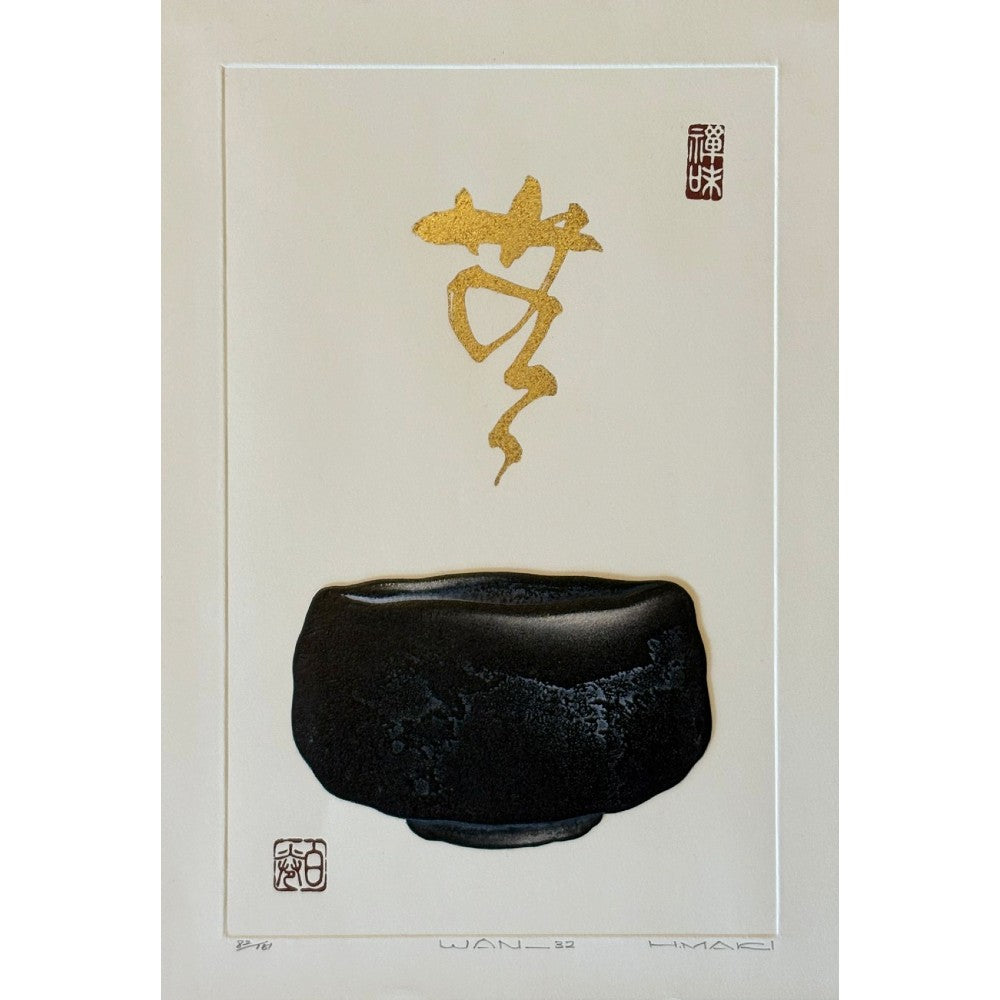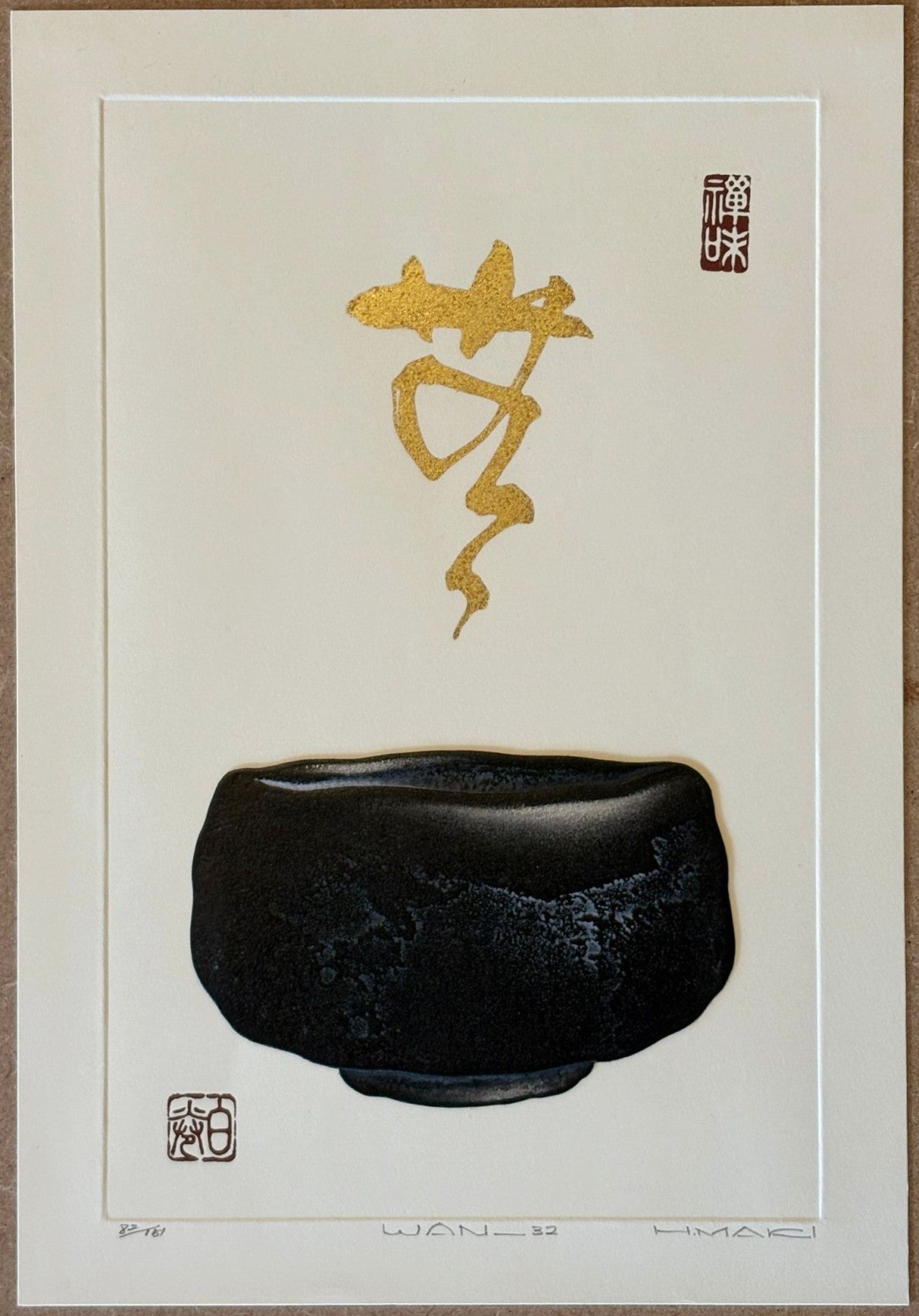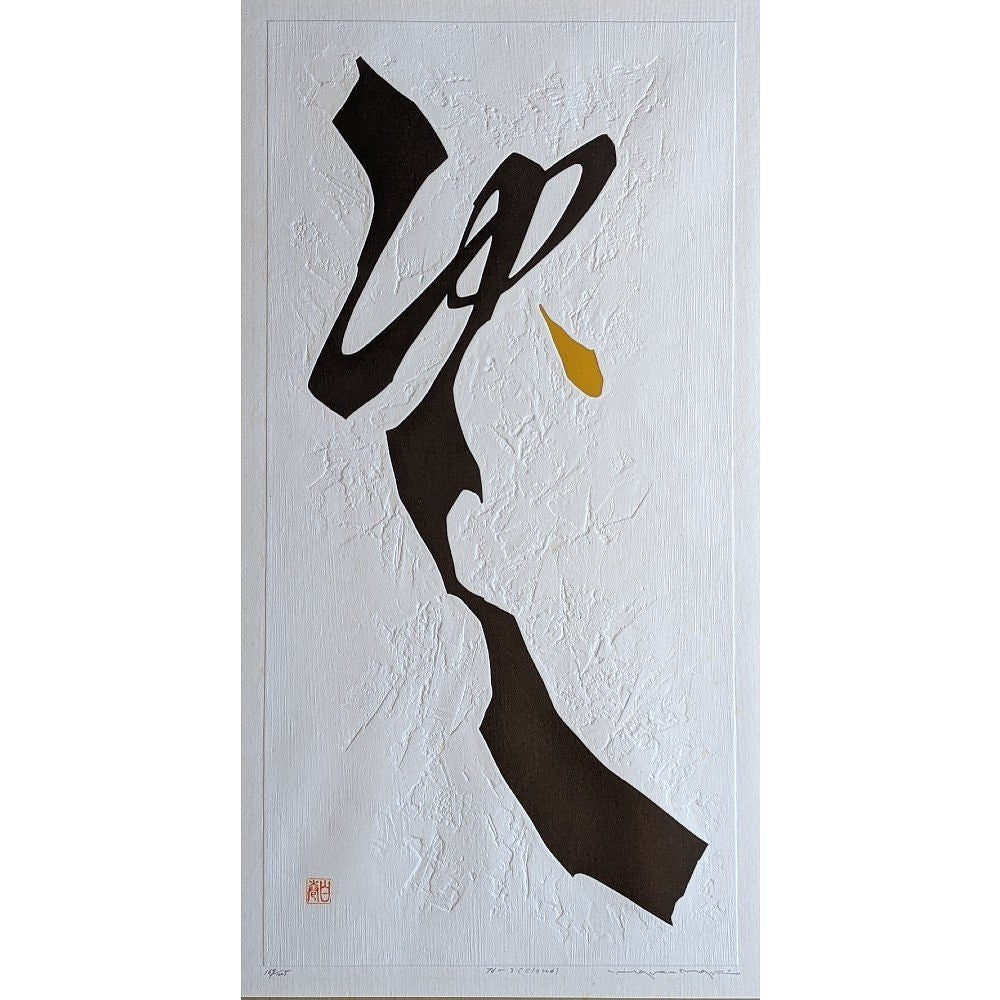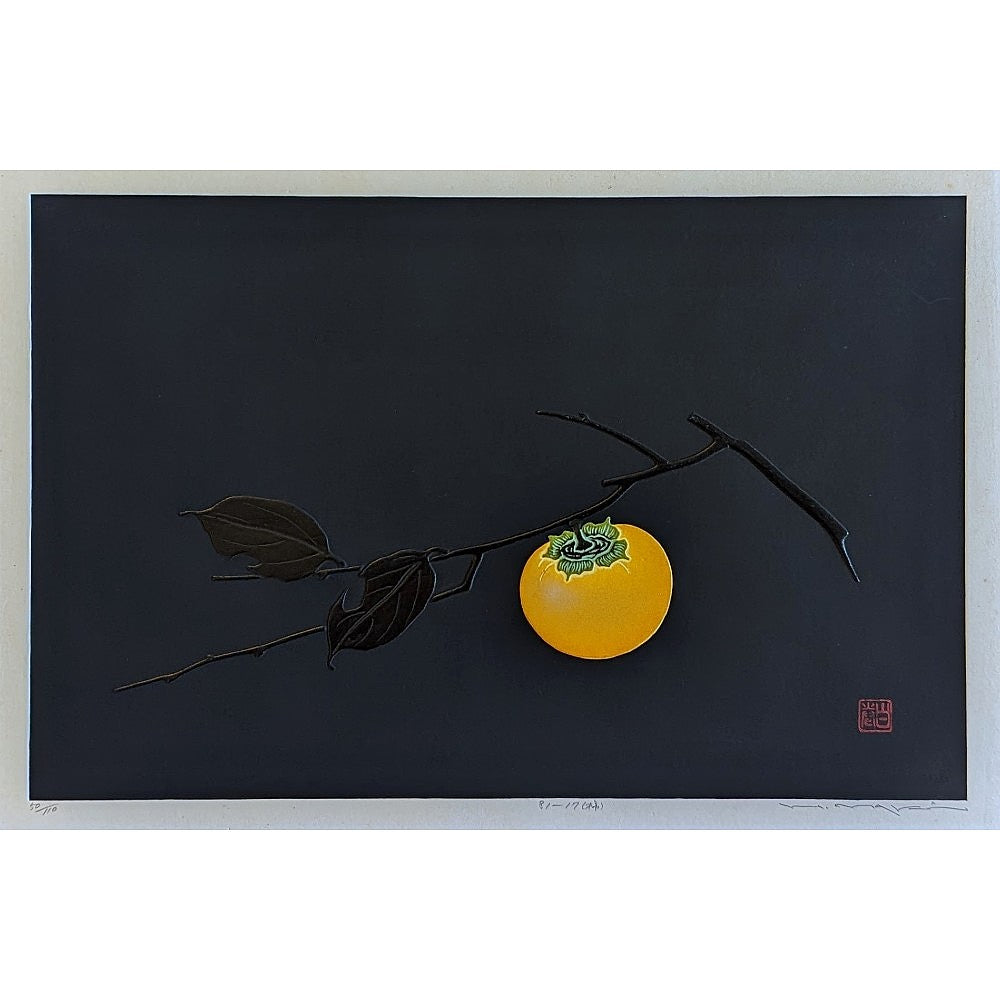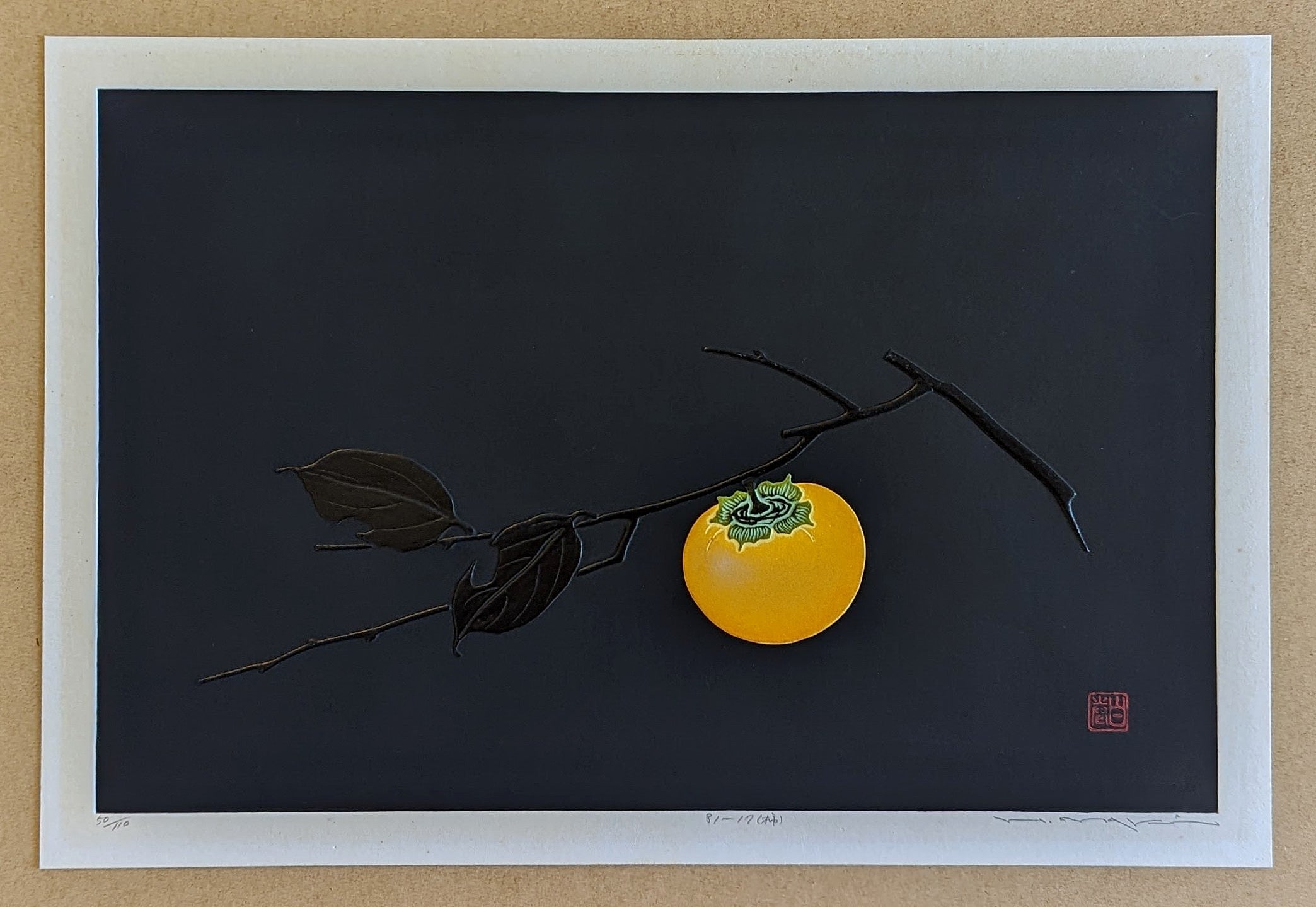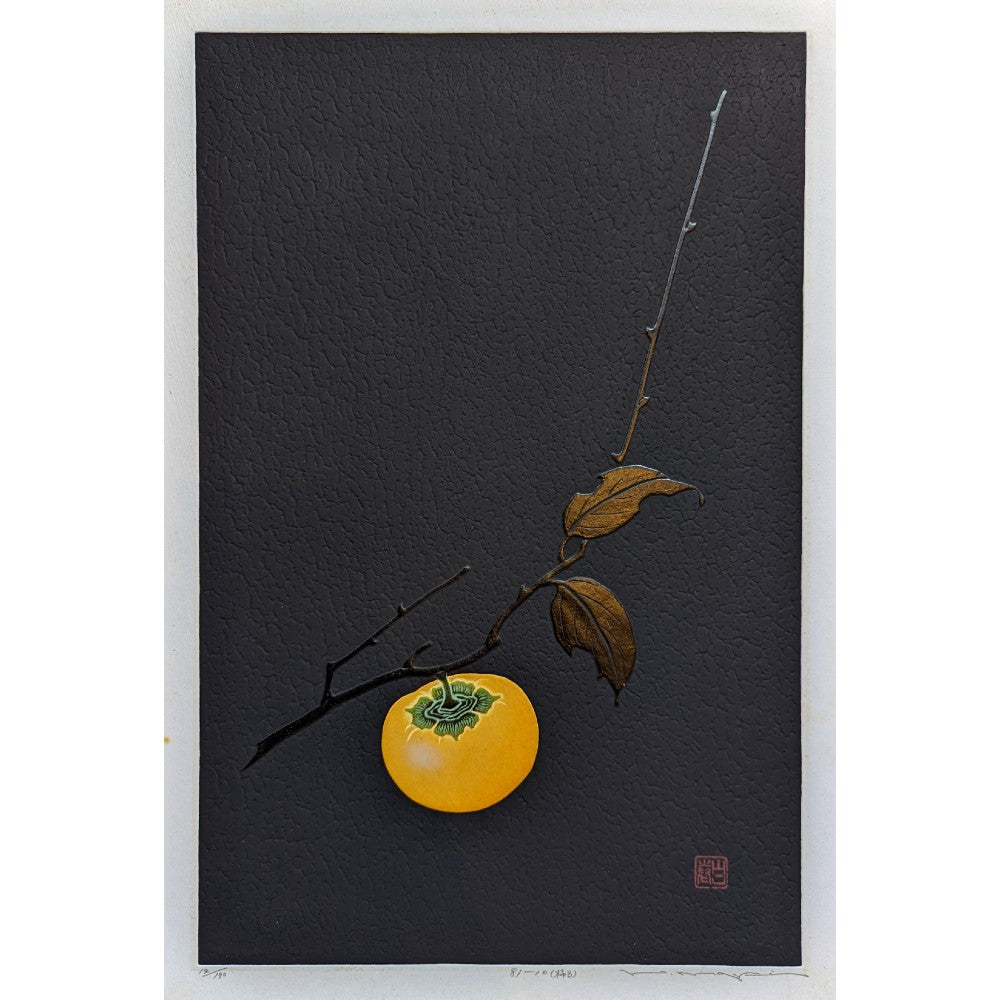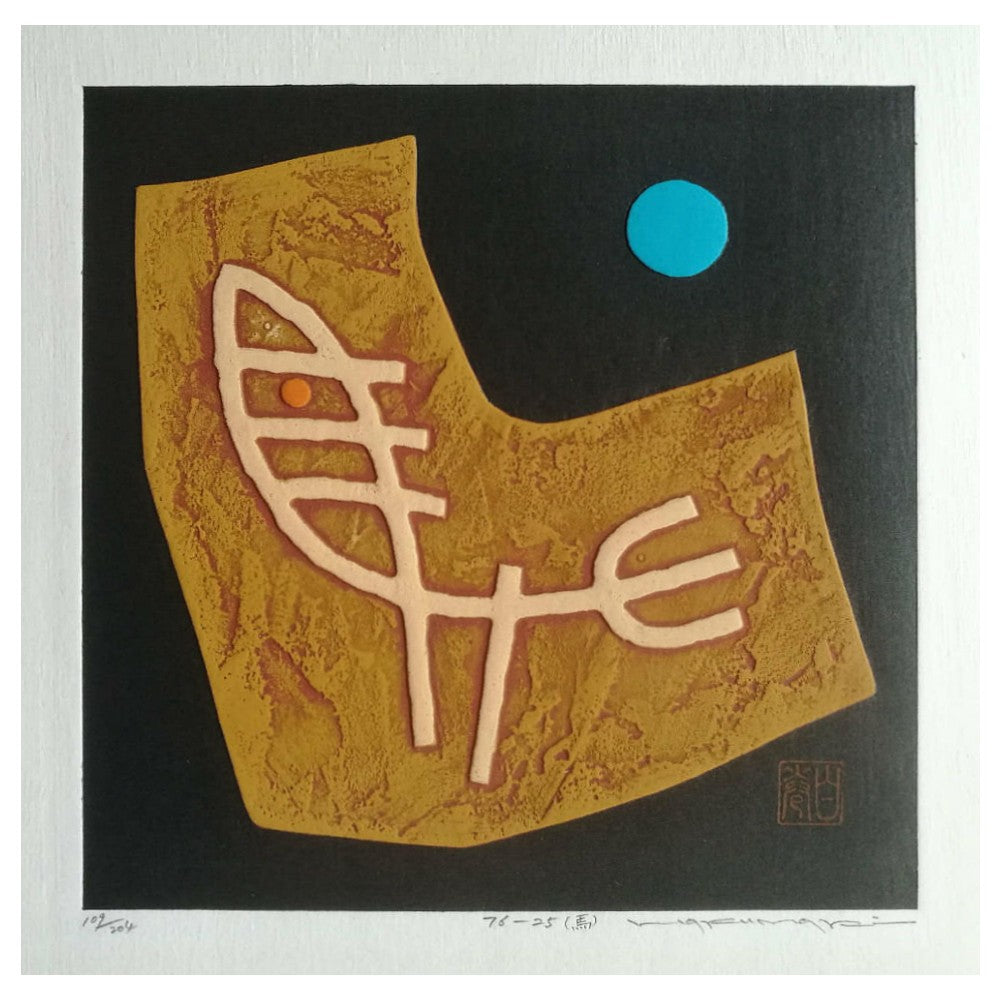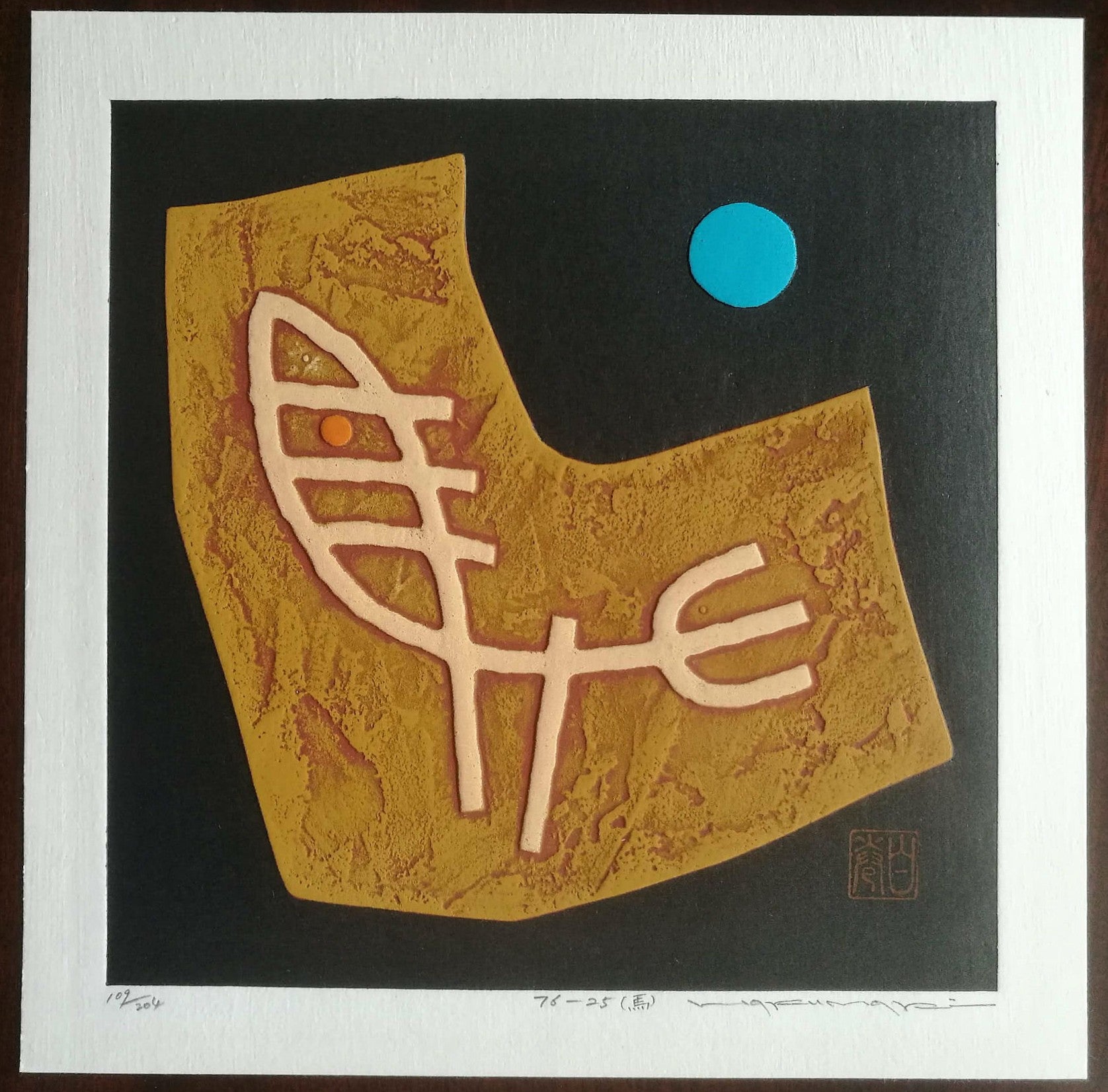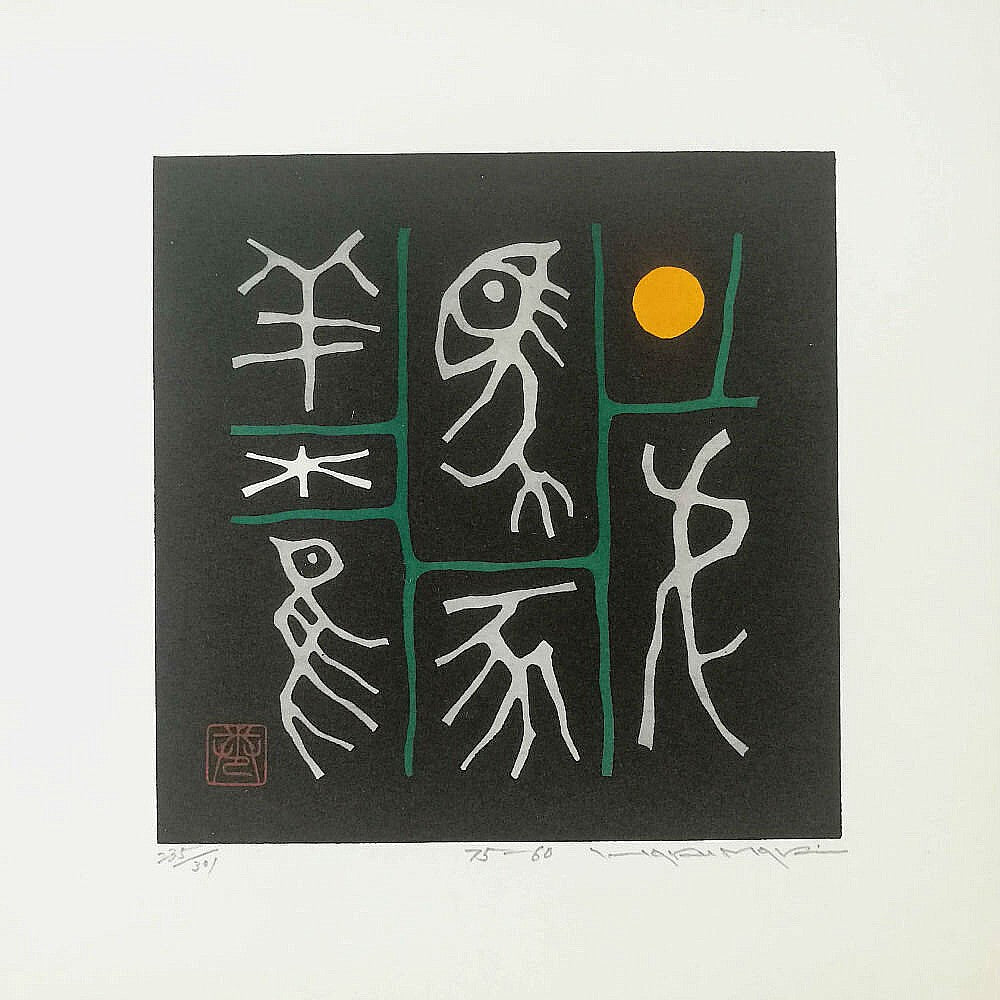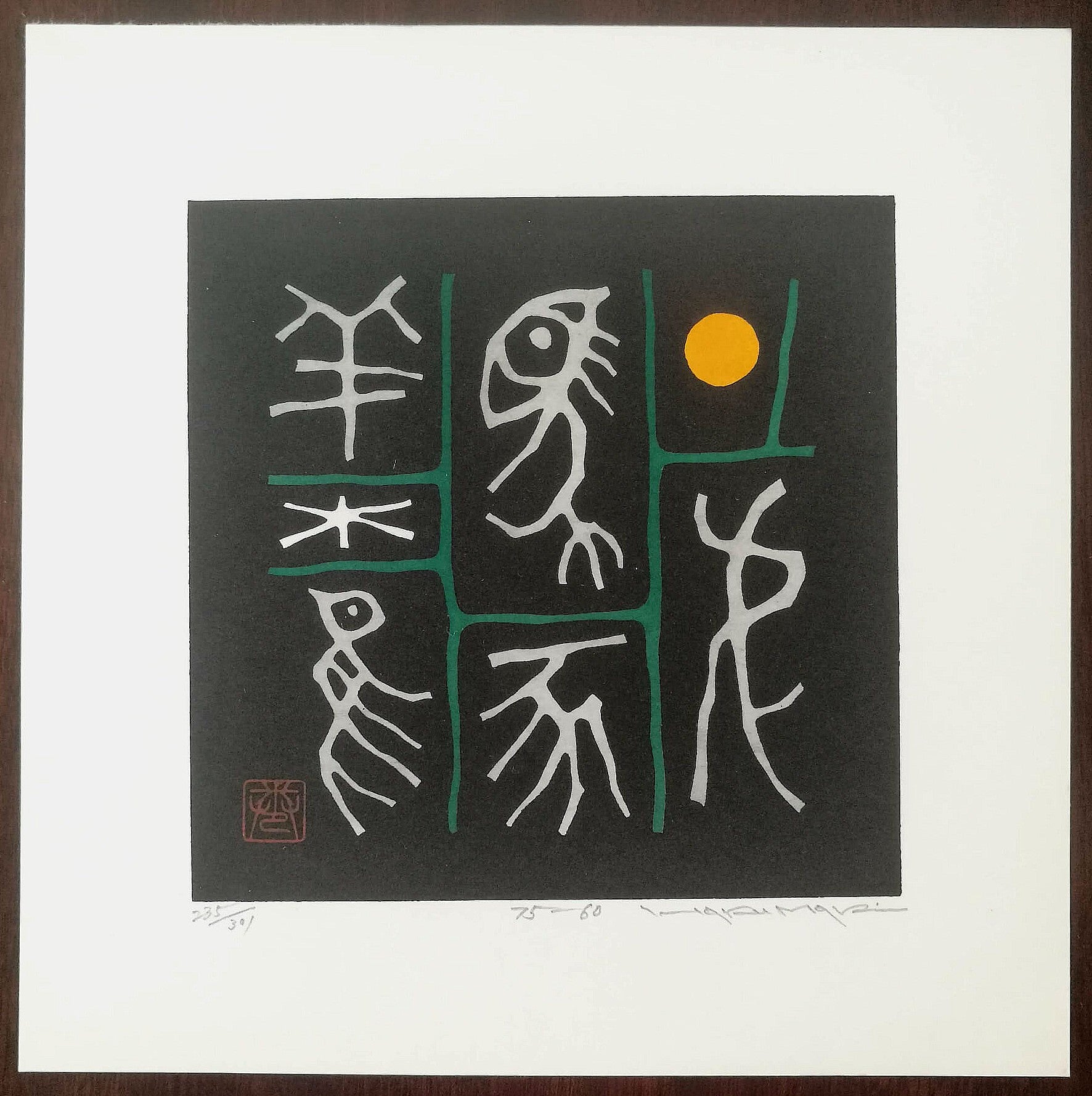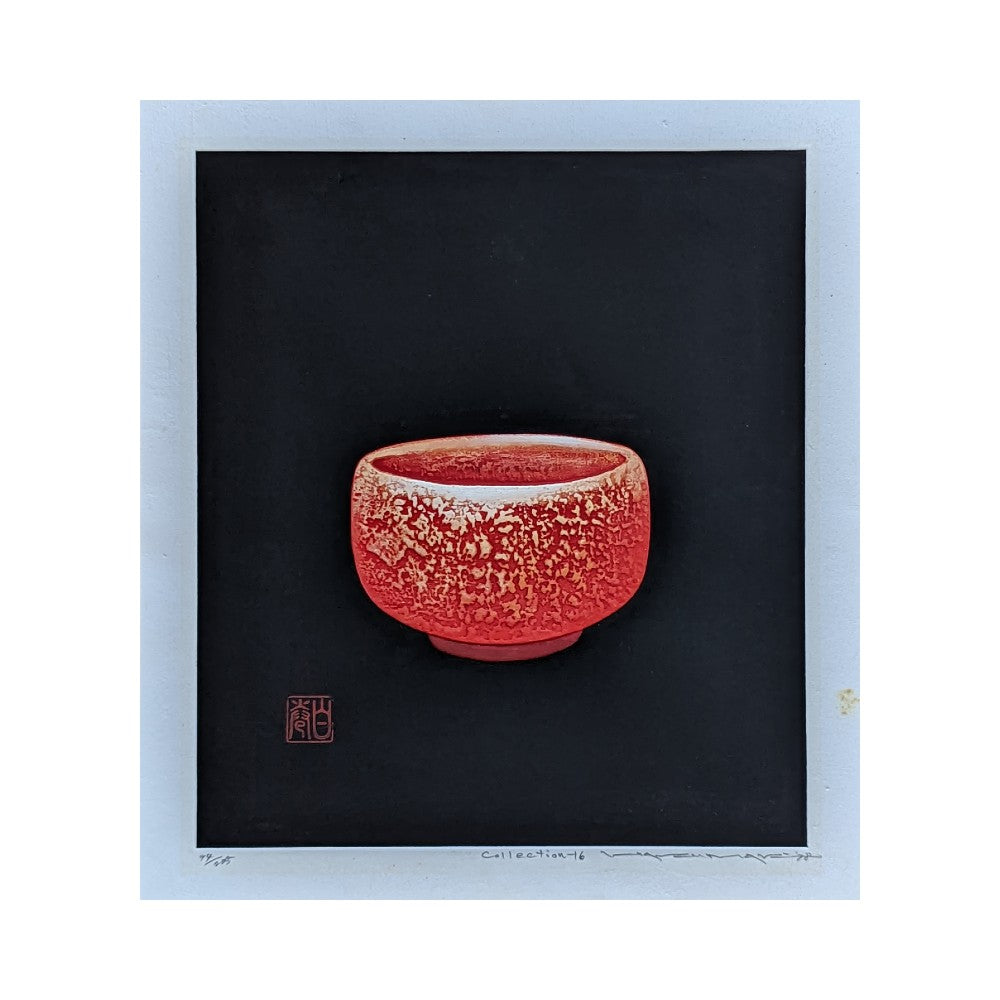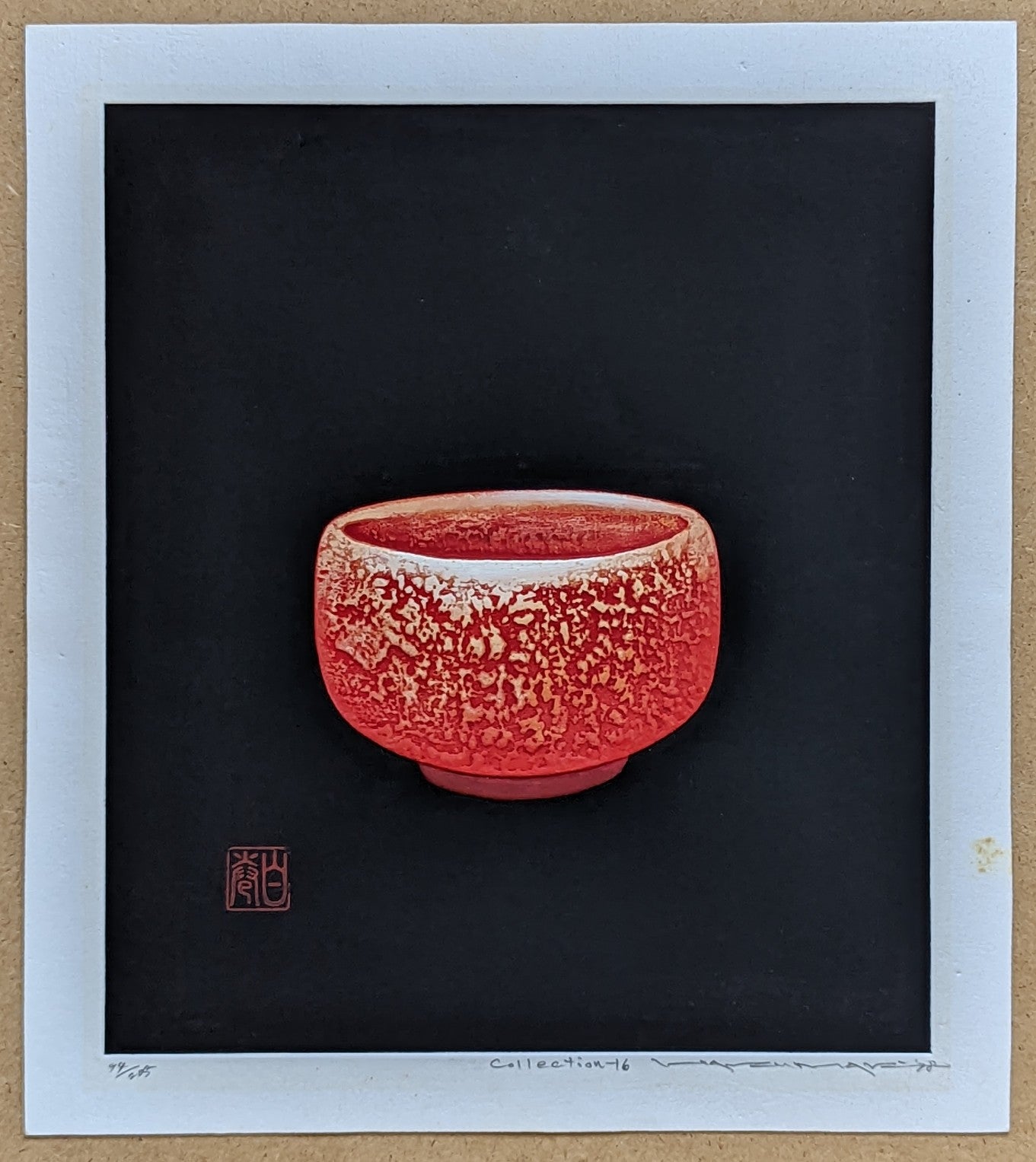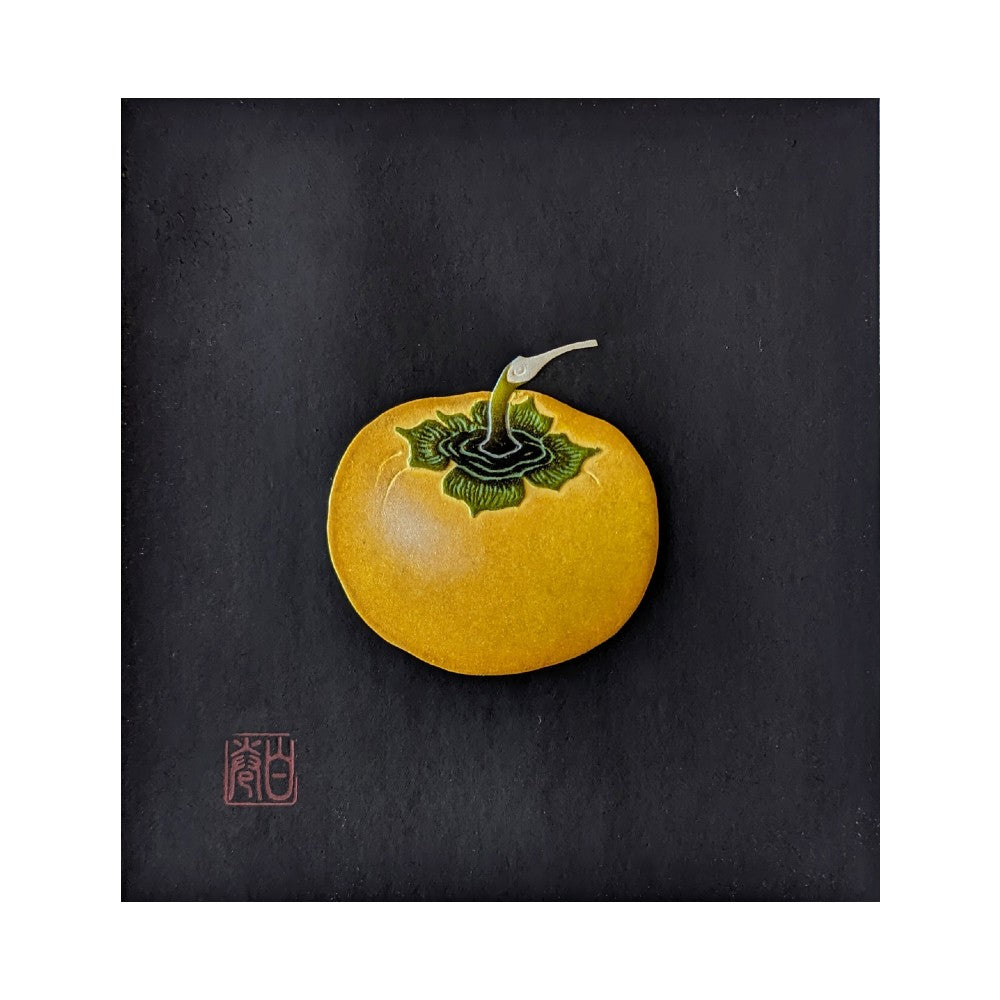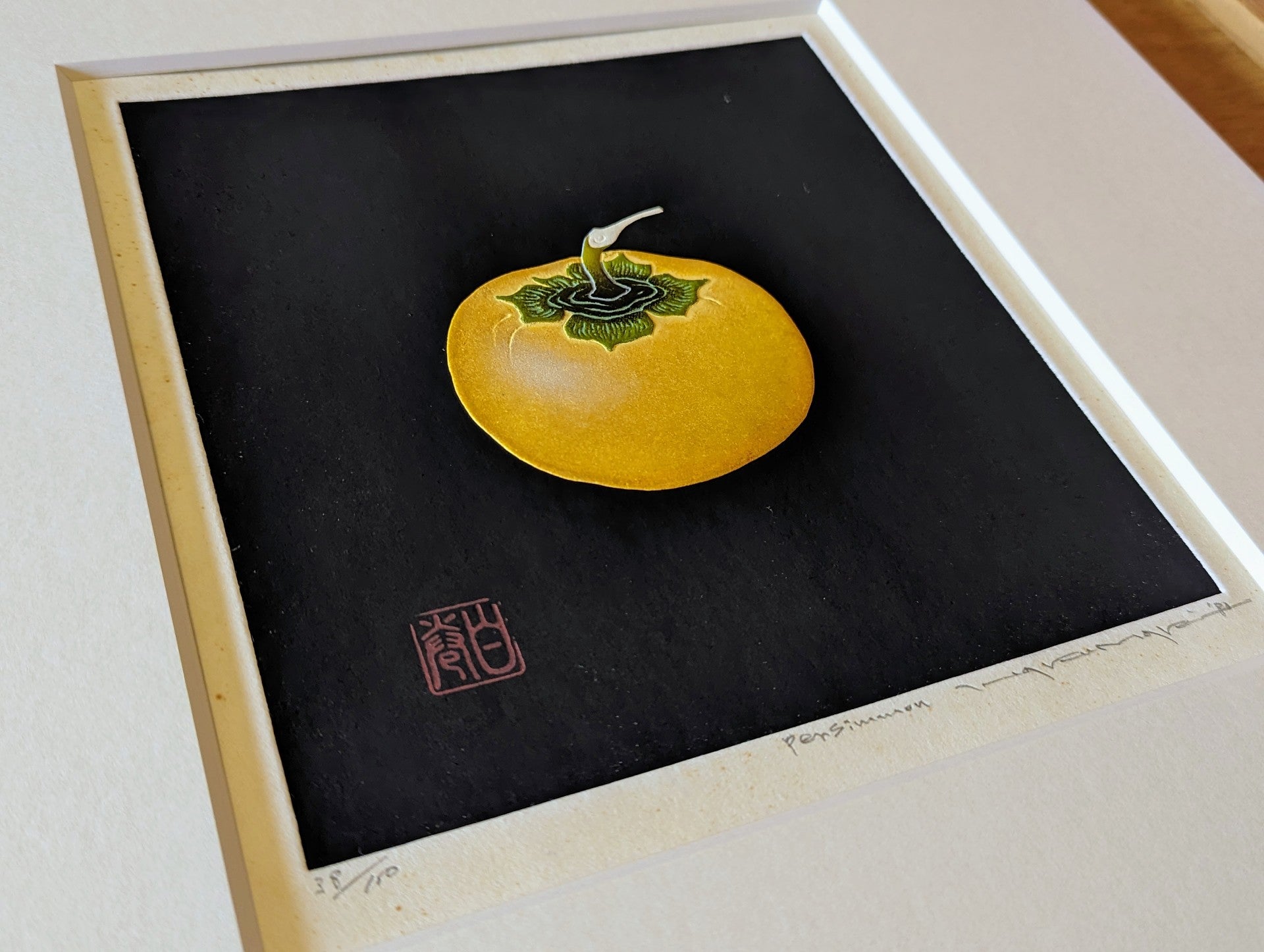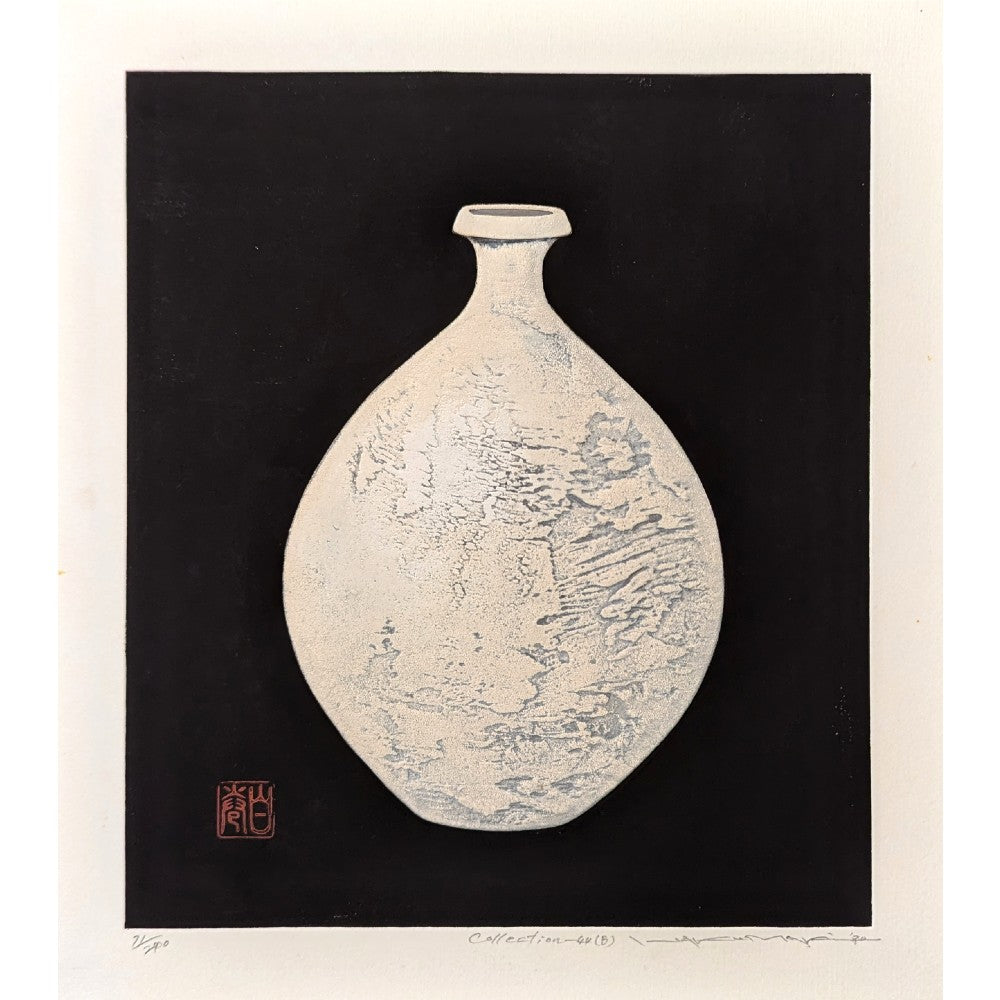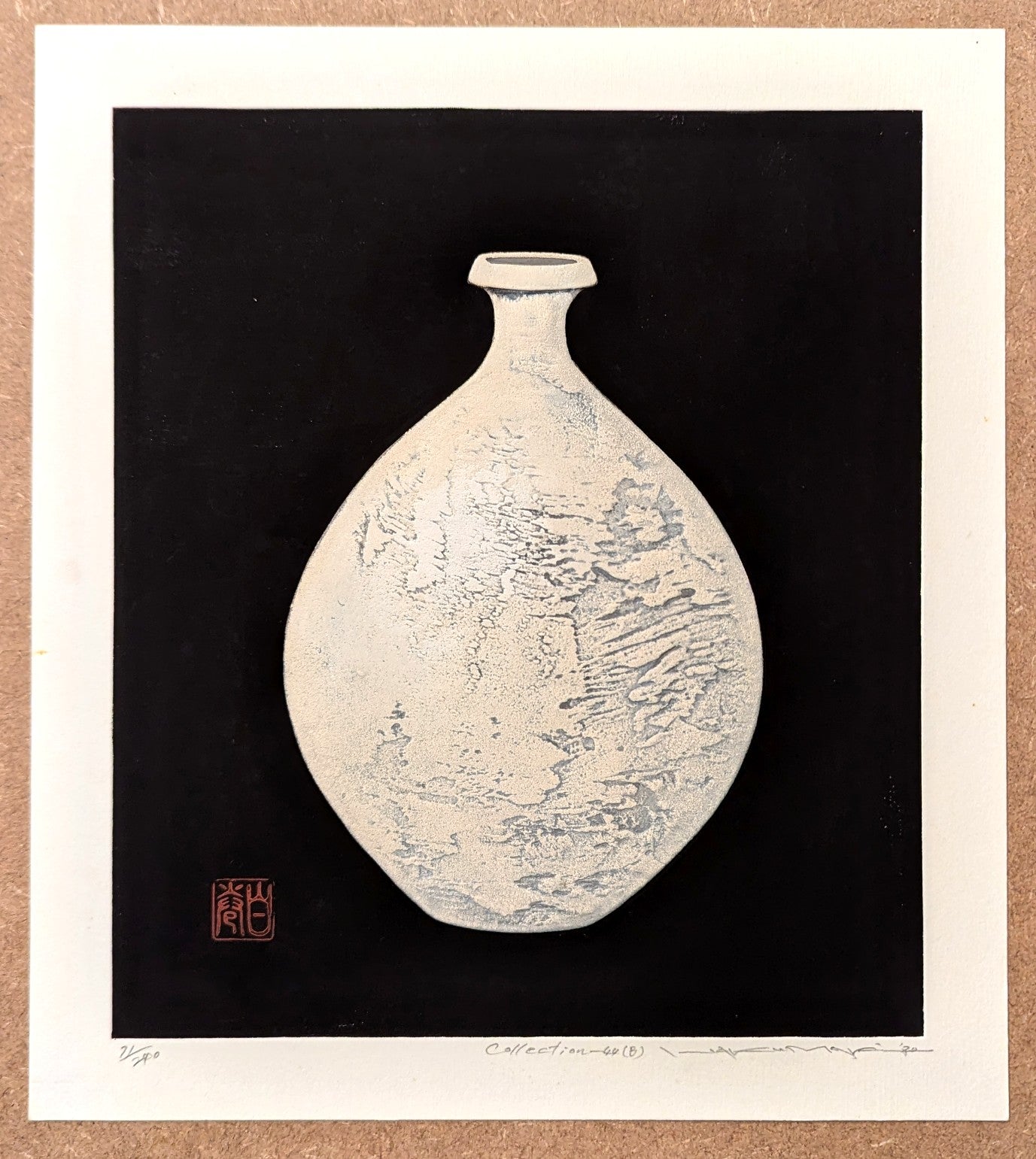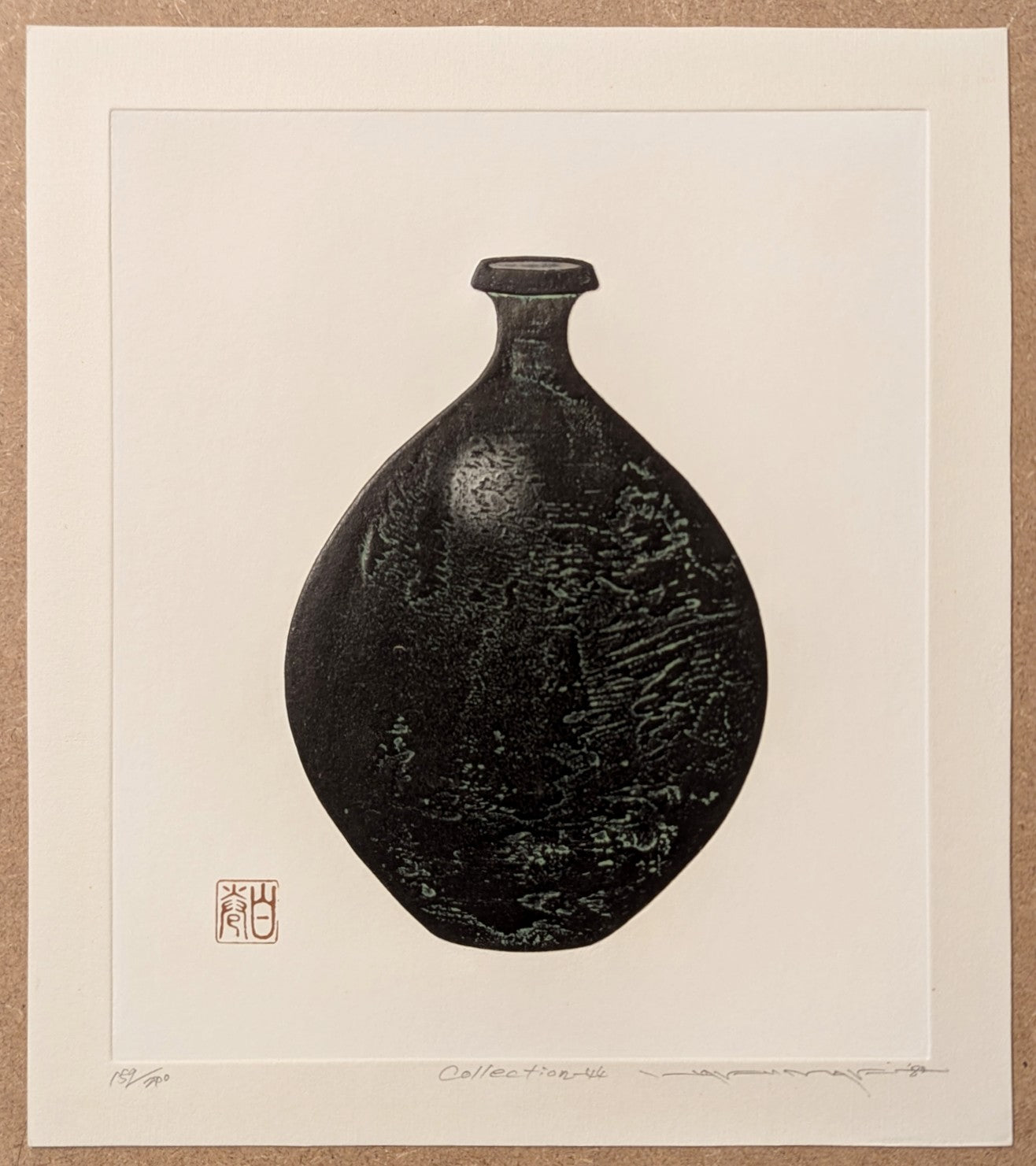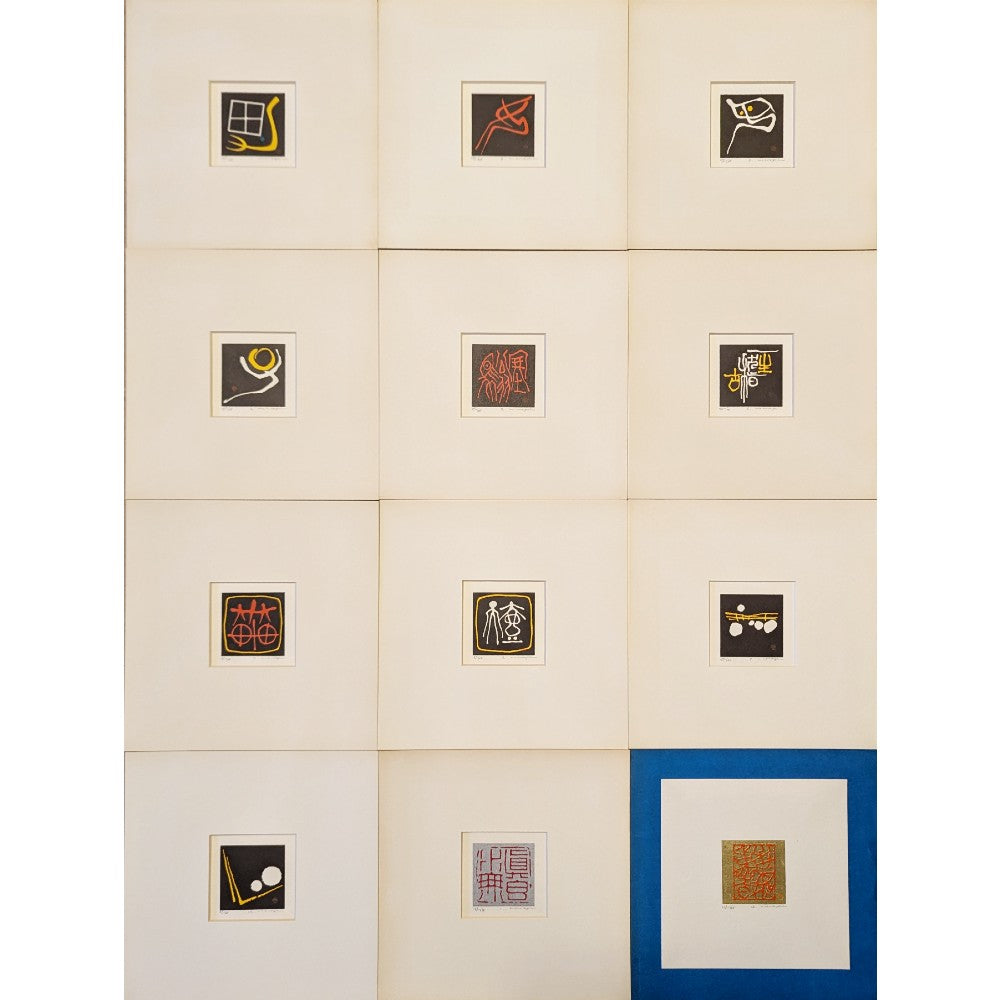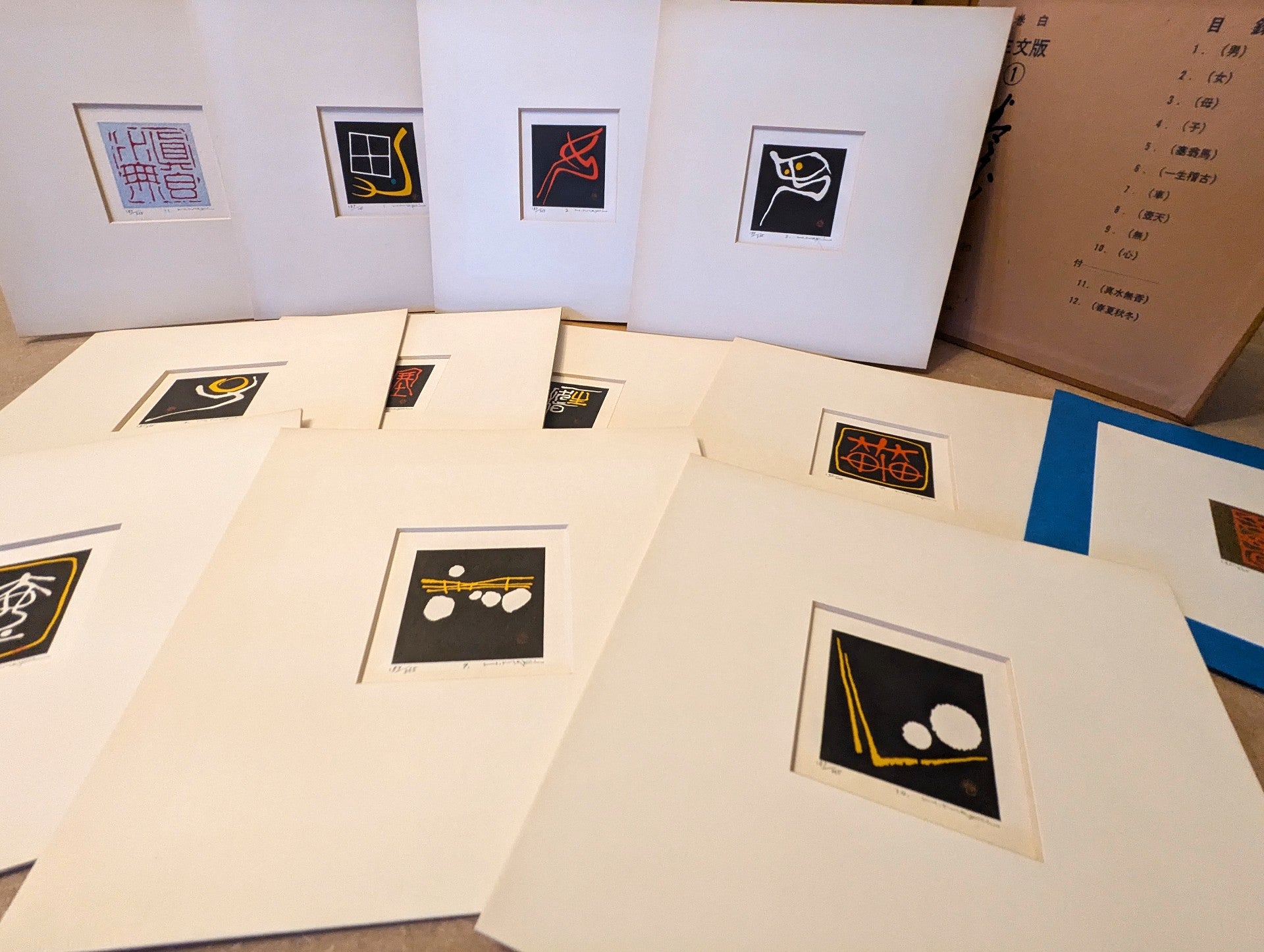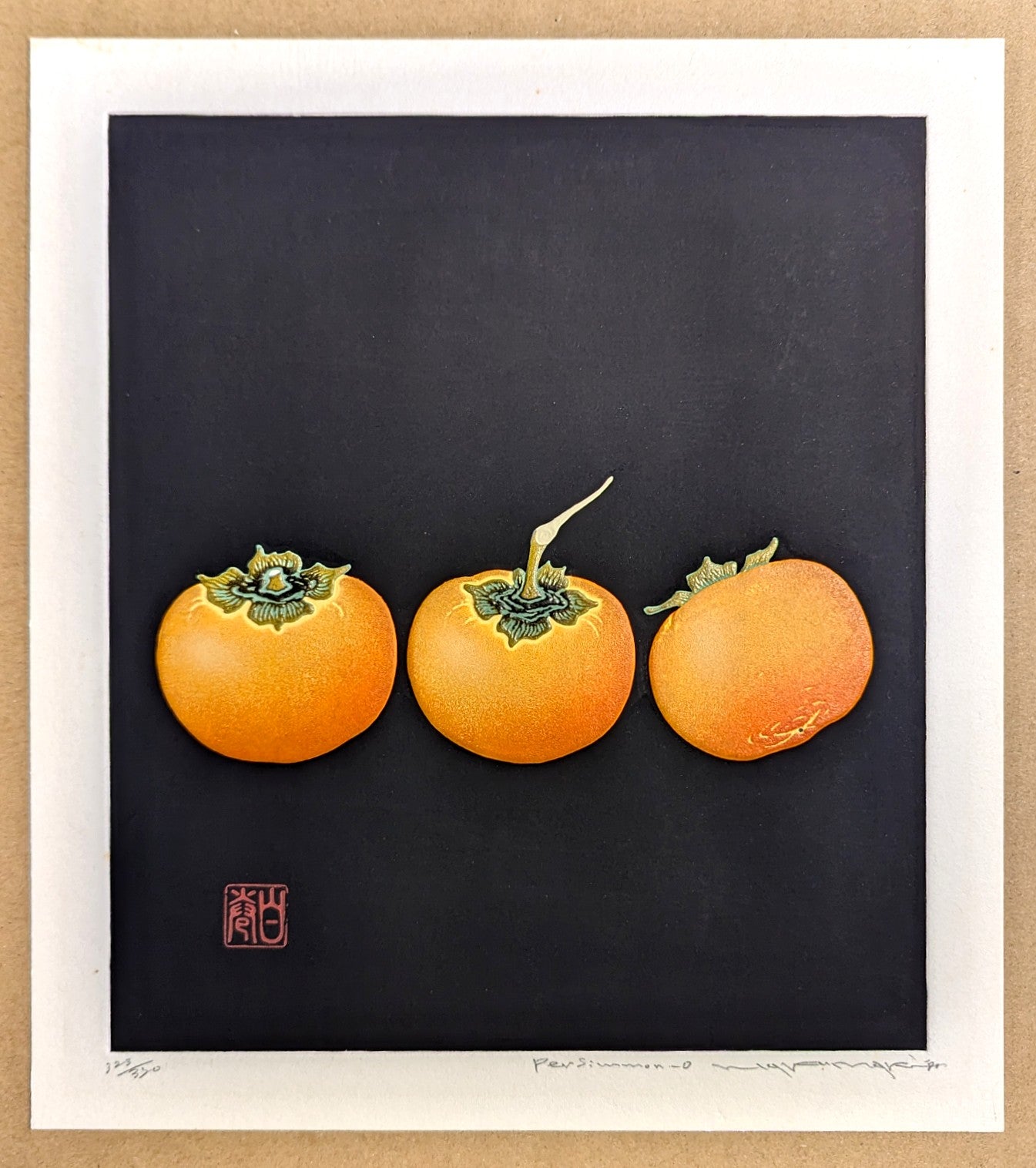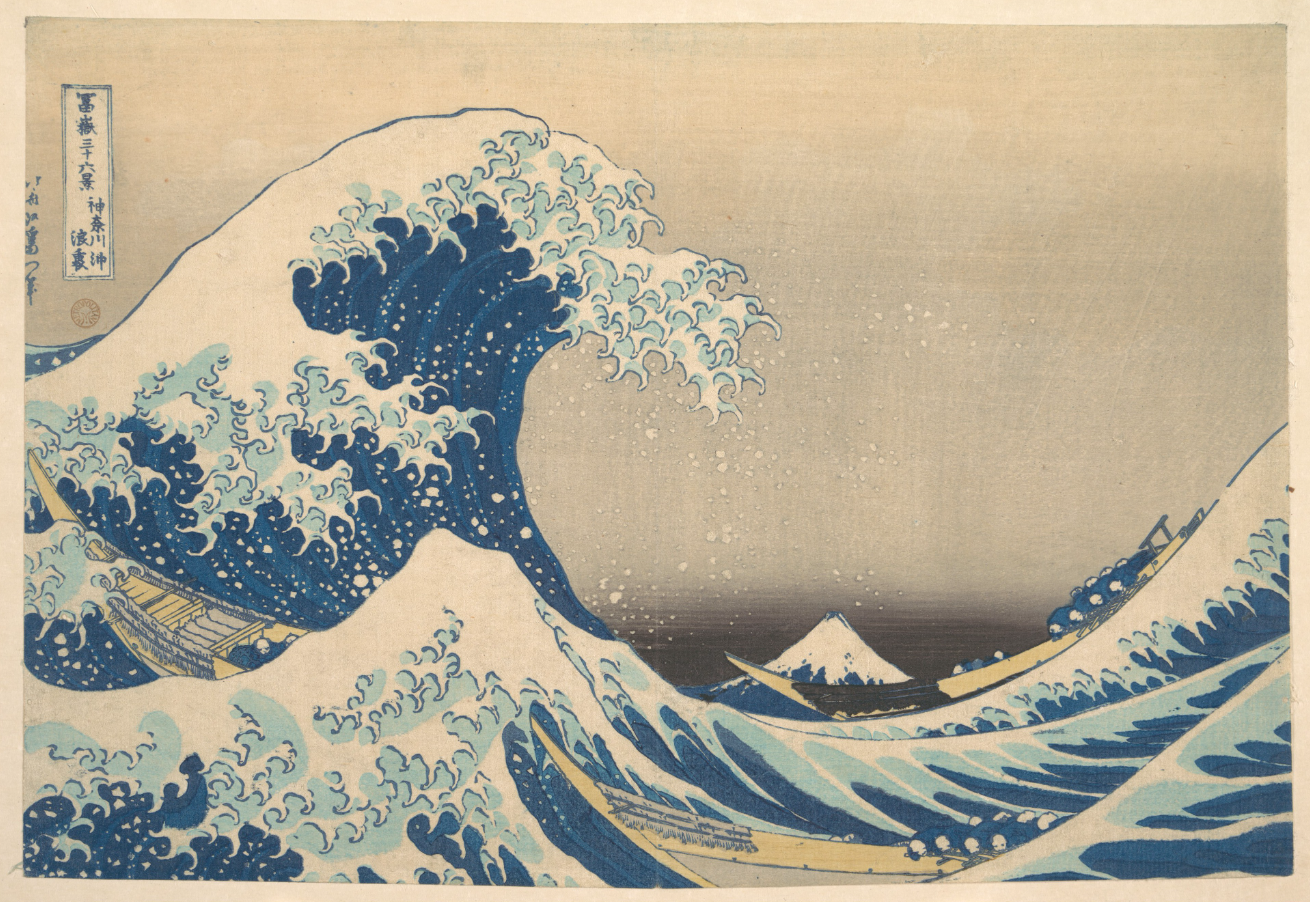巻白 Haku Maki (1924-2000)
Seal Script, Ceramics, & Persimmons, to “Splashes” & “Suns”: The Prints of Haku Maki
Born Maejima Tadaaki, Haku Maki survived wartime service in Japan’s kamikaze Special Attack Units (特別攻撃隊) to emerge as one of post-war Japan’s most innovative printmakers. Self-taught under the early influence of sōsaku-hanga (創作版画) pioneer Onchi Kōshirō (1891–1955), Maki developed a distinctive visual language that fused kanji, ancient Chinese seal scripts, and abstract forms. Gaining international recognition through publications like James Michener’s The Modern Japanese Print: An Appreciation, Maki refined a unique cement-relief embossing technique in the 1960s, creating sculptural, vividly coloured prints celebrated for their compositional strength and tactile depth, exemplified by his acclaimed series Poem, Emanation, and Festive Wine (1969).
Through the 1970s and 1980s, Maki expanded beyond his iconic kanji-based compositions, producing delicate, richly textured images of persimmons, ceramic vessels, and traditional Japanese motifs. His series Collection and Persimmons are especially notable for their elegant use of colour, urushi lacquer details, and refined embossing, becoming highly sought-after among collectors worldwide.
Despite declining health later in life, Maki continued creating innovative and contemplative works, including the series Fuji, Go, and the reflective Z-series, meditating on nature, form, and impermanence. His life, works, & unique design elements - “Splashes,” “Suns,” and the vibrant “Big Blues/Reds/Greens/Yellows” - were documented and coined by expert Daniel Tretiak. Today, Haku Maki’s prints reside in prestigious museum and private collections worldwide, celebrated for uniting traditional calligraphy, modern abstraction, and exceptional technical artistry.

